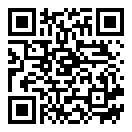The Body in a Religious and Secular Lifestyle
 / Assistant Professor, Iran Wisdom and Philosophy Institute / E.Alikhani@irip.ac.ir
/ Assistant Professor, Iran Wisdom and Philosophy Institute / E.Alikhani@irip.ac.irچکیده و کلیدواژه فارسی (Persian)
- ابن ابیالحديد معتزلي، عبدالحميدبن هبةالله، 1404ق، شرح نهجالبلاغه، تصحيح محمدابوالفضل ابراهيم، قم، كتابخانة آيتالله مرعشي نجفي.
- ابنسينا، حسينبن عبدالله، 1379، النجاة من الغرق فی بحر الضلامات، ويرايش محمدتقی دانشپژوه، تهران، دانشگاه تهران.
- ابنشعبه حرانی، حسینبن علي، 1394ق، تحف العقول، بيروت، مؤسسة الاعلمی.
- احمدی، بابک، 1387، مدرنيته و انديشه انتقادی، تهران، نشر مرکز.
- پاينده، ابوالقاسم، 1360، نهج الفصاحه، تهران، جاويدان.
- تميمی آمدی، عبدالواحدبن محمد، 1366، غرر الحكم و درر الكلم، قم، دفتر تبليغات اسلامی.
- چاووشيان، حسن، 1381، «بدن به مثابه رسانه هويت»، جامعهشناسی ايران، ش 4، ص 57ـ75.
- حاجیميری، فاطمه، 1395، «قدرت و بدن: بدن زنانه، به مثابه ابژه قدرت»، در: تارنمای انسانشناسی و فرهنگ anthropology.ir.
- حرعاملی، محمدبن حسن، 1402ق، وسائل الشيعه، بيروت، دار احياء التراث العربی.
- ذكايی، محمدسعيد، 1386، «جوانان، بدن و فرهنگ تناسب»، تحقيقات فرهنگی، سال اول، ش 1، ص 117ـ141.
- ريتزر، جرج، 1374، جامعهشناسی در دوران معاصر، ترجمة محسن ثلاثی، تهران، علمي و فرهنگي.
- شهگلی، احمد، 1393، «ساحت جسمی انسان و نقش آن در ارتقای سبك زندگی دينی»، در: مجموعه مقالات برگزیده همايش ملی سبک زندگی رضوي، مشهد، بنياد پژوهشهای اسلامی.
- صدرالمتألهين، 1363، مفاتيح الغيب، تهران، مؤسسة مطالعات و تحقيقات فرهنگی.
- صدوق، محمدبن علی، 1362، الخصال، قم، مؤسسة النشر الاسلامی.
- طبرسی، حسنبن فضل، 1371، مكارم الاخلاق، قم، شريف الرضي.
- طبرسی، فضلبن حسن، 1380، الآداب الدينية للخزانة المعينية، قم، زائر.
- غراب، ناصرالدين، 1392، «بدن و دين»، نامه پژوهش فرهنگی، سال نهم، ش 2، ص 145ـ170.
- غزالی، محمدبن محمد، 1378، كيميای سعادت، تهران، علمی و فرهنگی.
- ـــــ ، بيتا، احياء العلوم، بيروت، دارالكتاب العربی.
- فاتحی، ابوالقاسم و ابراهيم اخلاصی، 1387، «مديريت بدن و رابطه آن با پذيرش اجتماعی بدن»، مطالعات راهبردی زنان، ش 41، ص 9-42.
- فارابی، ابونصر، 1995، آراء اهل المدينة الفاضلة و مضادتها، بيروت، مكتبة الهلال.
- فوكو، ميشل، 1388، مراقبت و تنبيه: تولد زندان، ترجمة نيكو سرخوش و افشين جهانديده، تهران، نشر ني.
- كتاب مقدس، 1996، ایلام، انجمن كتاب مقدس ايران.
- كلينی، محمدبن يعقوب، 1413ق، الكافی، بيروت، دارالاضواء.
- گيدنز، آنتونی، 1393، تجدد و تشخص؛ جامعه و هويت شخصی در عصر جديد، ترجمة ناصر موفقيان، تهران، نشر نی.
- لوپس، خوزه و جان اسكات، 1385، ساخت نظريه اجتماعی، ترجمة حسين قاضيان، تهران، نشر نی.
- متقی هندی، علاءالدین، 1409ق، كنزالعمال، بيروت، مؤسسة الرساله.
- مجلسی، محمدباقر، 1403ق، بحارالانوار، بيروت، دار احياء التراث العربی.
- مطهری، مرتضی، 1390، مجموعه آثار، تهران، صدرا.
- مكارم شيرازی، ناصر، 1373، رهبران بزرگ، قم، مدرسة امام علىبن ابيطالب.
- نجفی، هادی، 1423ق، موسوعة احاديث اهلالبيت، بيروت، دار احياء التراث العربی.
- نصر، سيدحسين، 1389، دين و نظم طبيعت، ترجمه انشاءالله رحمتي، تهران، نشر ني.
- يزدی، محمدكاظم، 1385، العروة الوثقی، قم، مؤسسة النشر الاسلامی.
- Bourdieu, Pierre, 1984, Distinction: A Social Critique of the Judgment of Taste, Harvard University Press.
- Chitik, William, 1989, The Sufi Path of Knowledge, State University of New York Press.
- Corbin, Henry, 1978, The Man of Light in Iranian Sufism, trans. by: Nancy Pearson, London, Shambata.
- Featherston, Michel, 1991, Consumer Culture and Postmodernism, London, Sage.
- _____ , 2010, "Body, Image and Affect in Consumer Culture", Body & Society Journal. V. 16 (1), p.193-221.
- Frank, Arthur W., 1990, "Bringing Bodies back", in A decade review, theory, Culture and Society, N. 7, p. 62-131.
- Frost, L., 2003, "Doing Bodies Directly? Gender ,youth Aearance and Damage'', journal o youth studies, V. 6, N. 3, p. 145-167.
- Gimlin, Debra, 2006, "The Absent Body Project: Cosmetic Surgery as a Response to Bodily Dys-appearance", Sociology, V. 40, N. 4, p. 699-716.
- Goffman, E., 1963, Behavior in Public Places: Notes on the SocialOrganization of Gatherings, New York, Free Press.
- Gorgan, Sarah, 2000, Body Image: Understanding Body Dissatisfaction in Men Women and Children, New York, Routledge.
- Gottfried, Heid, 2003, "Tempting Bodies: Shaping Gender at Work in Japan", Sociology, V. 37, N. 2, p. 259-278.
- Hancock, Philip, et al, 2000, The Body, Culture, and Society, An Introduction, Open University Press, Buckingham, Philadelphia.
- Hochschild, Arlie Russell, 1983, The Managed Heart, Commercialization of Human Feeling, Barkeley CA: University of California Press.
- Honsen, J., 2002, Ivelin Deid, Marry Allys Watters. Make up, Fashion and exploitation, trans. By: A. Mansouri, Tehran, Golazin Publication, p.110-154.
- Howson, Alexandra & Inglis, D., 2001, "The body in sociology: tensions inside and outside sociological though", The Editorial Board of Sociological Review,V. 49, Issue 3, p. 297-317.
- Howson, Alexandra, 2005, Embodying Gender, London, Sage Publications Ltd.
- Murata, Sachiko, 1992, The Tao of Islam, Albany, State University of New York Press.
- Nettleton, Sara, 1995, The sociology of Health and Illness, Cambridge, polity press.
- Shilling, Chris, 1993, The Body and Social Theory, Culture & Society, London, Sage Publisher.
- Turner, Bryan, 1994, Regulating Bodies, Essay in Medical Sociology, London, Routledge.
- Wellington, A. Christine & Bryson, R. John, 2001, "At Face Value: Image Consultancy Emotional Labour and Professional Work", Sociology, V. 35, N. 4, p. 933-954.




